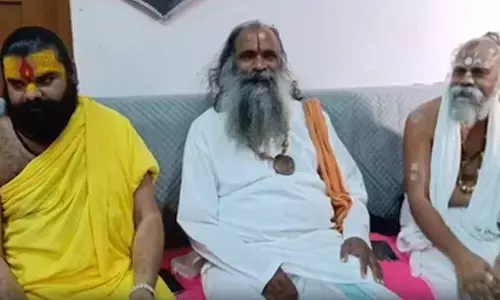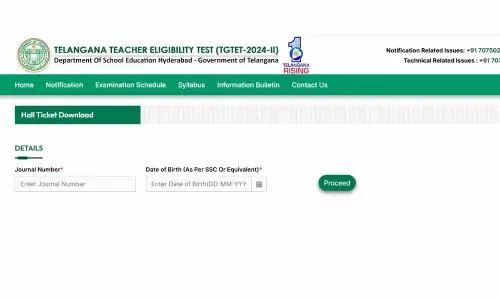Demonetisation, cashless economy & rural development

Demonetisation is an act by which government of a nation strips the circulation of one or more than one currency unit of its status as a legal tender. This process of Demonetisation is largely done keeping in mind the goal of unearthing Black Money accumulated through corrupt means.
Demonetisation is an act by which government of a nation strips the circulation of one or more than one currency unit of its status as a legal tender. This process of Demonetisation is largely done keeping in mind the goal of unearthing Black Money accumulated through corrupt means.
Not only India but several countries like USA in 1969; Zaire in 1990; Australia in 1996; Zimbabwe in 2010 and North Korea in 2010 have resorted to demonetisation.
While the effort resulted in success in the developed liberalised economies of the USA and Australia, it could not ensure any success in the underdeveloped African countries.
Demonetisation in India
- The first demonetisation in the independent India was done in the year 1946 and another one in the year 1978. At that time the currency notes of higher denomination constituted only 3% of the total currency in the circulation and its effect on the inconvenience was minimal.
- As far as demonetisation of November 2016 is concerned, the rupees 500 and 1000 constituted under gigantic share of 86% of the notes in circulation during 2016.
- The size of the economy, the growth rate of the economy and the role of the private sector and services sector to economic growth and development was small in the year 1946 and 1978 as compared to the year 2016.
- The number of people within the net of the Income-Tax was also not so large during 1946 and 1978. There are more than 11 crore PAN card holders now and the number is on increase.
- In the year 1946 and 1978 public were already aware that the demonetisation will be introduced by the government sooner or later, therefore, the demonetisation at that time could not produce any substantial gain to the economy.
- One of the key features of the demonetisation in 2016 is that it was kept very secret, so that the black money holders could not get any time to convert their black money and counterfeit currency into white money.
Objectives behind Demonetisation
- One of the objectives is that the taxable income earned from this exercise will be spent on economic growth boosting the development activities and also the economic upliftment of the poor.
- Existence of black money is one of the fundamental reasons for the endurance of high economic inequalities, poverty and unemployment in the country.
- The Wanchoo Committee in its report on Black Money-1971 described black money as a "cancerous growth in the country's economy, which if not checked in time, will surely lead to its ruination".
- Manifestation of Black Money in social, economic and political space of our lives has a debilitating effect on the Institutions of governance and conduct of public policy in the country.
- Success of inclusive development strategy critically depends on the capacity of our society to root out the evils of corruption and black money from its very foundations.
Cashless Economy
- Cashless economy means more and more use of digital mode and less use of cash in transactions.
- The World Bank's World Development Report-2016 envisages that in many instances, digital technologies have boosted growth, expanded opportunities and improved service delivery.
- Larger size of digital economies is in the developed economies is one of the factors of less corruption in these countries as compared to developing countries.
- Therefore, in order to escape from adversaries of corruption and black money and to have more transparent and cleaner economic growth with social Justice, less use of cash is one of the suggested measures.
- Sweden, where 89% is no cash payment, ranks 3rd in Corruption Perception Index. In India, an estimated 22% is non cash payment and India ranks 76th in the Corruption Perception Index. This veritably proves that there is a strong negative correlation between the cashless transaction and corruption.
Achieving a cashless rural economy
- Worldwide there is a tremendous interest among policymakers to explore the possibility of moving towards a cashless economy. Digitisation of transactions is the best way to move towards cashless economy.
- Rural areas are home to two thirds of the country’s population of some 870 million people where much of the challenge lies in achieving cashless transactions for the rest of the decade.
- It is estimated that rural users will constitute almost half of all Internet users in 2020. Number of connected rural consumers is expected to increase from 120 million in 2015 to almost 315 in 2020.
- Over 93% of people in rural India have not done any digital transactions. So the real problem lies there. The government has taken steps including announcing zero balance accounts for people, but growth of Bank branches has been low.
Challenges
- Currency denominated economy: High level of cash circulation in India. Cash in circulation amounts to around 13% of India's GDP.
- Transactions are mainly in cash: Nearly 95% of transactions take place in cash. Large size of informal / unorganised sector entities and workers prefer cash based transactions.
- ATM use is mainly for cash withdrawals and not for settling online transactions: Nearly 92% of ATM cards are used for cash withdrawals. Multiple holding of cards in urban and semi urban areas show low rural penetration.
- Limited availability of point of sale terminals: Most of the POS terminals remain in urban / semi urban areas.
- Mobile Internet penetration remains weak in rural India: In India there is poor connectivity in rural areas. Lower literacy level in poor and rural parts of the country makes it problematic to push the use of plastic money on a wider scale.
Banking facilities in rural areas
- Private sector banks have been steadily increasing their rural presence. Top private lenders ICICI Bank, HDFC Bank and Yes Bank have been expanding their presence in unbanked and under banked areas over the past 5 years.
- RBI has asked banks to prioritize opening of branches in unbanked rural centres over 3 year cycle of 2013-16. The central bank will give credit for the branches opened in excess of the 25% for a year.
- Technology is a great enabler for financial inclusion, which includes branch on wheels, a mobilevan-based branch that aims at providing banking services to a cluster of remote unbanked villages.
- Though rural branches benefit from cheaper real estate rents, the cost of servicing and staffing balances out the benefits. However, since RBI mandates 25% of new branches in rural areas, banks have aggressively ventured into rural areas.
Prospects and the road ahead
- The Jan Dhan Aadhaar Mobile (JAM) can encourage digital transaction culture. It is spreading to reach each remote corner of the country. A large number of government transfers (DBT) are made through JAM mode. This will help people to get digital transaction awareness.
- The role of the government in these cases will be to make cashless transactions mandatory for certain payments and make it mandatory for certain services exceeding a certain amount which has already been initiated.
- A tax rebate (of say 1% to 2%) on payments made by households as salary to unorganised sector (domestic servants, sweepers etc) can boost cashless payments.
- This will do two things, one the households will have an incentive to go cashless and two, large portion of the unorganised sector will be financially included.
- The 5 A's of promoting financial inclusion through cashless payment instruments which are availability, accessibility, acceptability, affordability and awareness.
- Government should assure basic necessities in rural areas and focus on developing infrastructure. Special drives through schools, colleges, panchayats etc can help create awareness about cashless/ banking transactions.
- Financial literacy is a must for bringing more and more people to the digital platform. Digital payment or payment through banks, instead of paying cash should be encouraged.
- Linkage of all welfare activities with bank accounts is a very strategic step. A strong banking base is the basic prerequisite for the cashless economy.
- Targeted financial education programs can improve financial skills and Credit Management, and increase account ownership in rural India.
Perspectives
- More and more money will come to the banking system in the form of either current or savings account. The savings will push up investment and lead to capital formation in the economy.
- The opening of new bank accounts for depositing the banned currencies shows that it has promoted banking literacy among the general population and connected the common man who was out of the net of the banking system with the banking system.
- It has strengthened the banking system, as many Bank branches were facing acute problem of NPA. The capabilities of banks to lend more will be enhanced which would raise investment in the economy.
- The excess income deposited in the banks can generate taxable income for the government which can be spent on various welfare programmes for the poor in different sectors of the economy.
- People who have earned black money through corruption and unfair means will be exposed and be punished so that it will pave the way towards a corruption free society. It will help to create a corruption free administrative and political environment in the country.
- It will enhance the flow of FDI to the economy, as the foreign investment requires a corruption free environment and it will also be helpful to control the outflow of illicit money to other developed countries for foreign bank accounts.
- It will promote social and cultural development in the society. Corruption and black money erodes social and cultural systems. It will put a break on unethical social development.
- It will help the nation to achieve a real and cleaner economic growth rate, not an artificial and dirty economic growth rate achieved with the help of Black Money.
- Any growth rate achieved through distributive justice and with less economic inequality is the true growth rate for a developing country like India.
- Less growth rate with less poverty and lower income inequality is more desirable and better for the Happiness Index than high growth rate with more number of people living below the poverty line and there is huge income inequality between the rich and poor.
- India is a great democracy where the people at large despite inconvenience supported the demonetization drive by the government for unearthing black money and counterfeit currency.
Suggestions:
- Demonetization should be a continuous exercise by the government and be repeated at suitable intervals to discourage the hording of Black Money in the form of cash.
- The self help groups (SHGs) can be of great help to the people in the promotion of digital banking systems in the rural areas. More and more SHGs must be given the charge of Bank Mitras (friend) who can extend their help to the bank, post offices and Bank corresponding for proliferation of digital economy.
- Rural social infrastructure such as Youth Clubs and Mahila Mandals and Panchayati Raj Institutions should be energized for the propagation of digital rural economy.
- The Gram Sabhas in Panchayati Raj Institutions and Ward Sabhas in ULBs mast take up the issue of digital economy at the village level.
- All the line department functionaries such as school teachers, health workers, village Development officers, anganwadi workers, etc. must educate the people about the financial inclusion and digital economy
- Like Pulse Polio Campaign, the Digital India Campaign twice or thrice in a year in a mass scale can be conducted in the country. It is an appropriate way to propagate the digital India campaign both in rural as well as urban areas.
- Strong political will among both the ruling and opposition parties is necessary for the implementation of any economic reforms including demonetization and cashless economy in the country.
Expected Questions
1) Do you think the recent demonetization move is an opportunity for India to become a digital economy? Critically examine.
2) It is widely expected that demonetization will bring long-term benefits. Will demonetization deliver benefits that outweigh the short-term costs? Critically examine.
3) In the light of recent demonetization move, critically discuss necessity of creating the institutional architecture needed for a cashless society.
4)Through demonetization, government, banks and RBI have received too much cash in their coffers. In your opinion, what should government do with the money it gets through demonetization? Discuss the issues and challenges.
5) Discuss how demonetization of Rs 500 and Rs 1000 notes would impact terror financing.
6) Discuss how Demonetization will help moving towards Corruption free society.
7) Demonetization should be a continuous exercise by the government and be repeated at suitable intervals to discourage the hording of Black Money. Comment.
8) Black money is not just an economic, but a social menace as well. Critically examine.
9) What re the historical precedents for demonetization in India?
How was the 2016 demonetization different from the previous ones?
10) How can self help groups (SHGs) and Panchayati Raj Institutions in the rural areas help in the
transition towards digital transactions?



















